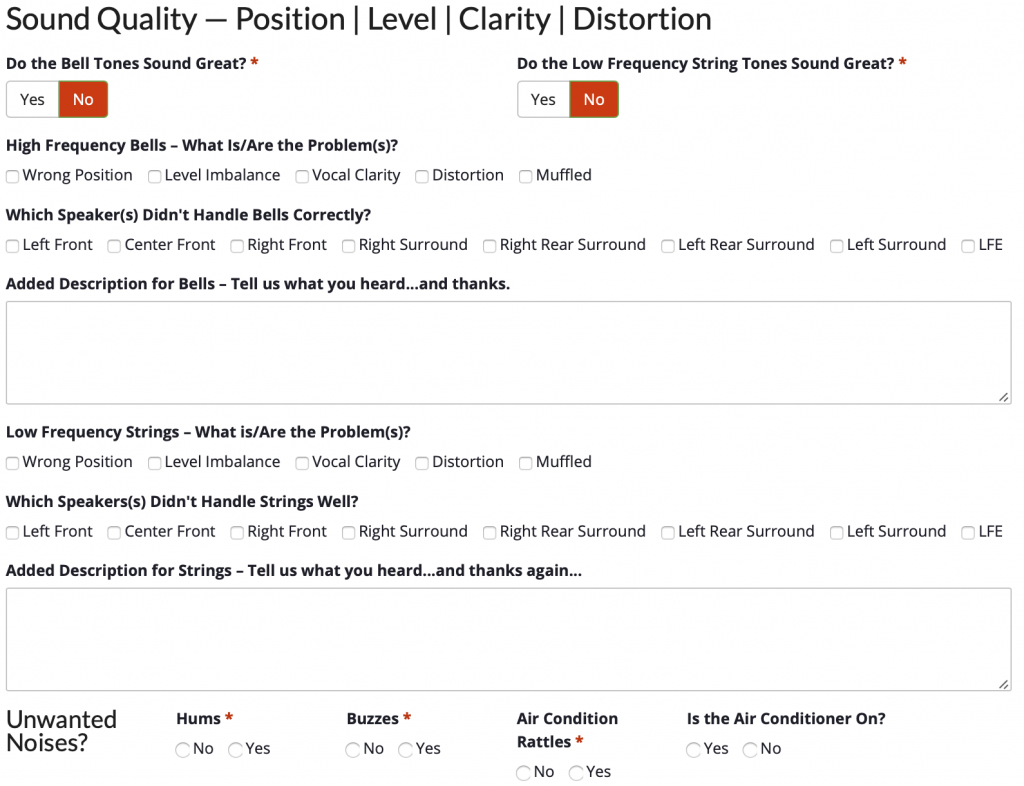Hi, and welcome.
The information on this page has been transferred and updated at the Training Course page: Where to Judge The Auditorium.
There is no perfect answer for “Where should I be to judge the screen and sound system?”
Actually, we don’t need to be in a “perfect” place. We just need a consistent place – measure from the same place every time. Still…the question is: Where?
 One group of experts will say that you should judge from so many “Screen Heights” away.
One group of experts will say that you should judge from so many “Screen Heights” away.
A screen height is just like it sounds, and a little difficult to evaluate exactly. In the movie theater, if a screen is 64 feet wide, then the height is 27 feet high. Maybe. Because there are two different standards for screens.
Continue reading “1a) Where to Judge The Auditorium”
